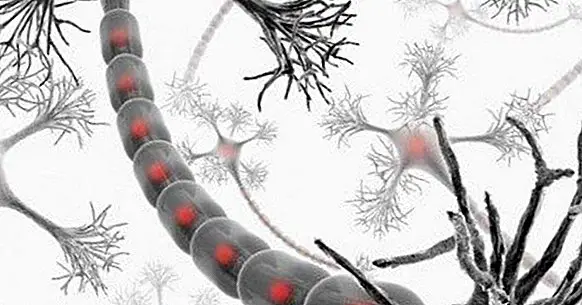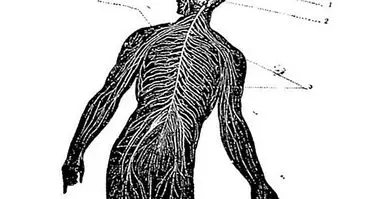Demyelination and associated diseases
A few days ago the news spread that a famous Spanish radio and television presenter, called Josep Lobató , shared by Instagram a video with his progress in recovering the speech he had lost because of a demyelinating disease .
In it you can intuit the effort that Lobató must make to pronounce words as simple as "no" and "yes", something that healthy adults can do automatically, without paying any attention to the realization of the chain of movements necessary to do so.
As is natural, most of the information related to the health of the presenter is confidential, and neither is much known about whether Josep Lobató will be able to recover speech completely or not. But nevertheless, that does not mean that the viralization of your video has been useful for many people to show their support and solidarity , which I join.

To all this ... what exactly is a demyelinating disease and why can it cause someone to have problems when it comes to talking? Next I give a brief explanation on the subject, but before it is necessary to know what is a substance called myelin.
What is myelin?
Myelin is a substance that, by covering the part of the nerve cells that stretches to reach distant sites (called the axon), makes the interior of the neuron relatively isolated.
And what is the usefulness of this? Basically, the fact that the myelin sheaths cover the axon making it look like a string of sausages allows the electrical impulses that travel through it to go much faster. We can imagine it as if wrapping the channel through which the electricity travels would cause it to be more channeled and advance only where it can, that is, through the axon and not outside. Thanks to myelin these nervous impulses are not scattered everywhere, losing their power .
Whether nerve impulses travel more slowly or faster is not simply a matter of patience; for the brain to work well it is necessary that many networks of neurons are synchronized and are sending massive amounts of information all the time. That means that there are mental processes that can only be performed if there are many nerve cells functioning at the expected speed, and that if the electrical signals sent by some neurons go much slower, the whole process fails in its overall nature. Which partly explains what demyelinating diseases are.
Diseases of demyelination
A demyelinating disease, as its name suggests, it is characterized by generating a process of demyelination, that is, the destruction of myelin sheaths that cover part of the neurons.
That does not mean simply that because of this disease we move to do things in a much slower way. Although the speed at which nerve impulses travel through neurons seems somewhat quantitative, since there are many different speeds, a significant delay in the transmission of signals produces qualitatively different consequences than would happen without that delay. That's why demyelination is not limited to making us speak more slowly, for example, but rather can make us lose the ability to speak .
The other consequences of demyelination
But the effects of a demyelinating disease do not have to do only with speech. Myelin covers the axons of all types of neurons, regardless of whether they have a role or not in the functioning of speech, and that is why the destruction of myelin sheaths can be noticed in our ability to perform many types of actions.
Some diseases in which demyelination occurs, for example, are the Pelizaeus-Merzbacher disease, in which the symptoms include spasticity, involuntary movements of the eyes or dementia, or leukodystrophies, which are related to the appearance of spasms and vision problems, among other ailments. But the best known demyelinating disease is multiple sclerosis, which affects all kinds of processes and is very harmful to the entire Central and General Nervous System.
These diseases are another sign that in our mental life not only neurons matter, but there are other elements that interact with them to make everything work as it should.



















